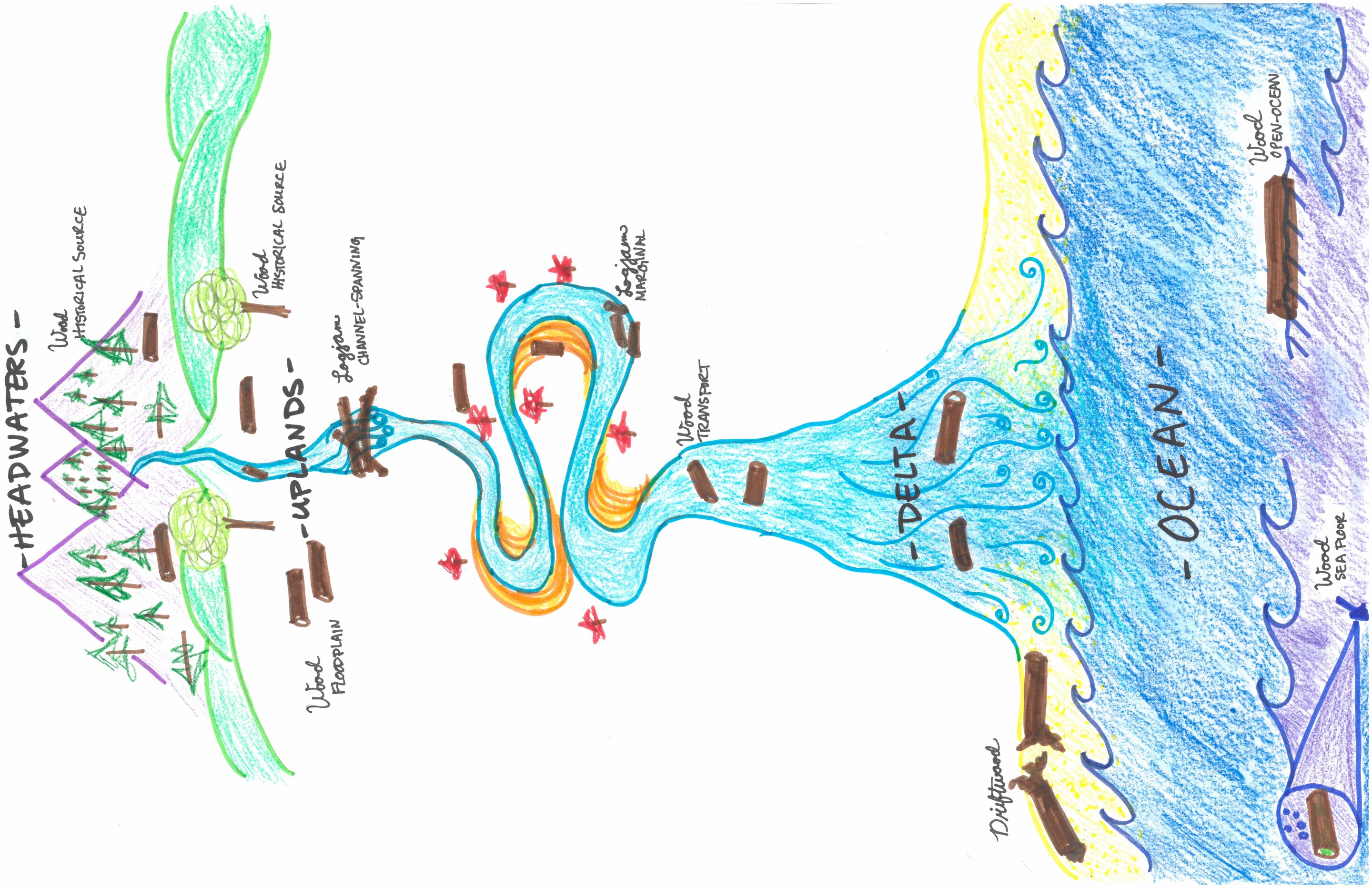#Disrupting flow of wood from rivers to oceans impacts marine environments

“#Disrupting flow of wood from rivers to oceans impacts marine environments”

Ellen Wohl has always been fascinated by what happens in the deep sea. She studies interactions between rivers and water, the flow of sediment and wood, and the landforms created as a result.
A Colorado State University Distinguished Professor, Wohl said that she saw the first pictures of organisms found near hydrothermal vents in the deep sea in the 1970s when they were first discovered.
Her interest in the sea—and how organisms on pieces of wood that sink to the ocean floor create these communities—led to a new area of research for the fluvial geomorphologist. A lot of wood used to end up in oceans, but humans around the world have interrupted the cascade, Wohl said.
The related study, “Damming the wood falls,” was published Dec. 10 in Science Advances.
Wohl teamed up with Emily Iskin, a doctoral student in the Department of Geosciences in the Warner College of Natural Resources, to measure records of wood flowing to reservoirs and coastal regions to estimate the magnitude of global wood movement. They looked at data from the United States, Canada, France, Russia, Serbia and large regional datasets from Switzerland and Japan.
The scientists determined that 4.7 million cubic meters—or 166 million cubic feet—of large wood could enter the oceans each year, representing a maximum estimate because of wood removal from rivers and reservoirs and a minimum estimate of historical wood movement due to deforestation and river engineering.
Reducing these movements of wood negatively affects coastal and marine environments, said Wohl.
The researchers hope to bring attention to a problem many people may not be aware of, that interrupting the cascade of wood from waterways has consequences for marine environments.
“We as humans have been altering the wood cascade and interrupting it for more than a century,” said Wohl.
Driftwood is removed in some coastal areas, such as tourist beaches in the Mediterranean, yet it is important for a variety of plants and animals, providing important nutrients and helping with the movement of sand.
“When driftwood sinks, it’s like a sunken coral reef,” said Wohl. “Living creatures, mostly invertebrates, clams and crustaceans use that wood as a refuge.”
‘Everything is connected’
Iskin, whose master’s thesis at CSU focused on large wood dynamics in the Merced River corridor in Yosemite National Park, said that the way humans interact with wood is very different than the dynamic in forests before we existed.
“Small scale human impacts, such as removing wood from a river, draining a floodplain and logging a hillslope, affect the entire river corridor at a much broader scale,” she said. “Everything is connected. Logjams in a river are not only beneficial to that local ecosystem, but also provide benefits downstream all the way to the open ocean.”
Iskin said that these human impacts aren’t inherently good or bad, but they will undoubtedly alter river systems.
“Sometimes we can anticipate those effects and sometimes we can’t,” she said. “The rivers are going to adjust to their current environment.”
Wohl said that she envisions scientists using radio tracking devices on logs and wood in the future.
“You could track them from satellites and watch oceanic circulation patterns,” she said.
Wohl hopes that this analysis will spur efforts to measure wood flux to the oceans from the remaining relatively undammed large rivers such as the Mackenzie and Yukon in North America or the Amazon and Congo in the tropics.
“It would be great if we could get more studies around the world of what’s coming into reservoirs and going out into the ocean,” she said.
A new way to make wood transparent, stronger and lighter than glass
Ellen Wohl et al, Damming the wood falls, Science Advances (2021). DOI: 10.1126/sciadv.abj0988. www.science.org/doi/10.1126/sciadv.abj0988
Citation:
Disrupting flow of wood from rivers to oceans impacts marine environments (2021, December 10)
retrieved 10 December 2021
from https://phys.org/news/2021-12-disrupting-wood-rivers-oceans-impacts.html
This document is subject to copyright. Apart from any fair dealing for the purpose of private study or research, no
part may be reproduced without the written permission. The content is provided for information purposes only.
If you liked the article, do not forget to share it with your friends. Follow us on Google News too, click on the star and choose us from your favorites.
For forums sites go to Forum.BuradaBiliyorum.Com
If you want to read more Like this articles, you can visit our Science category.



